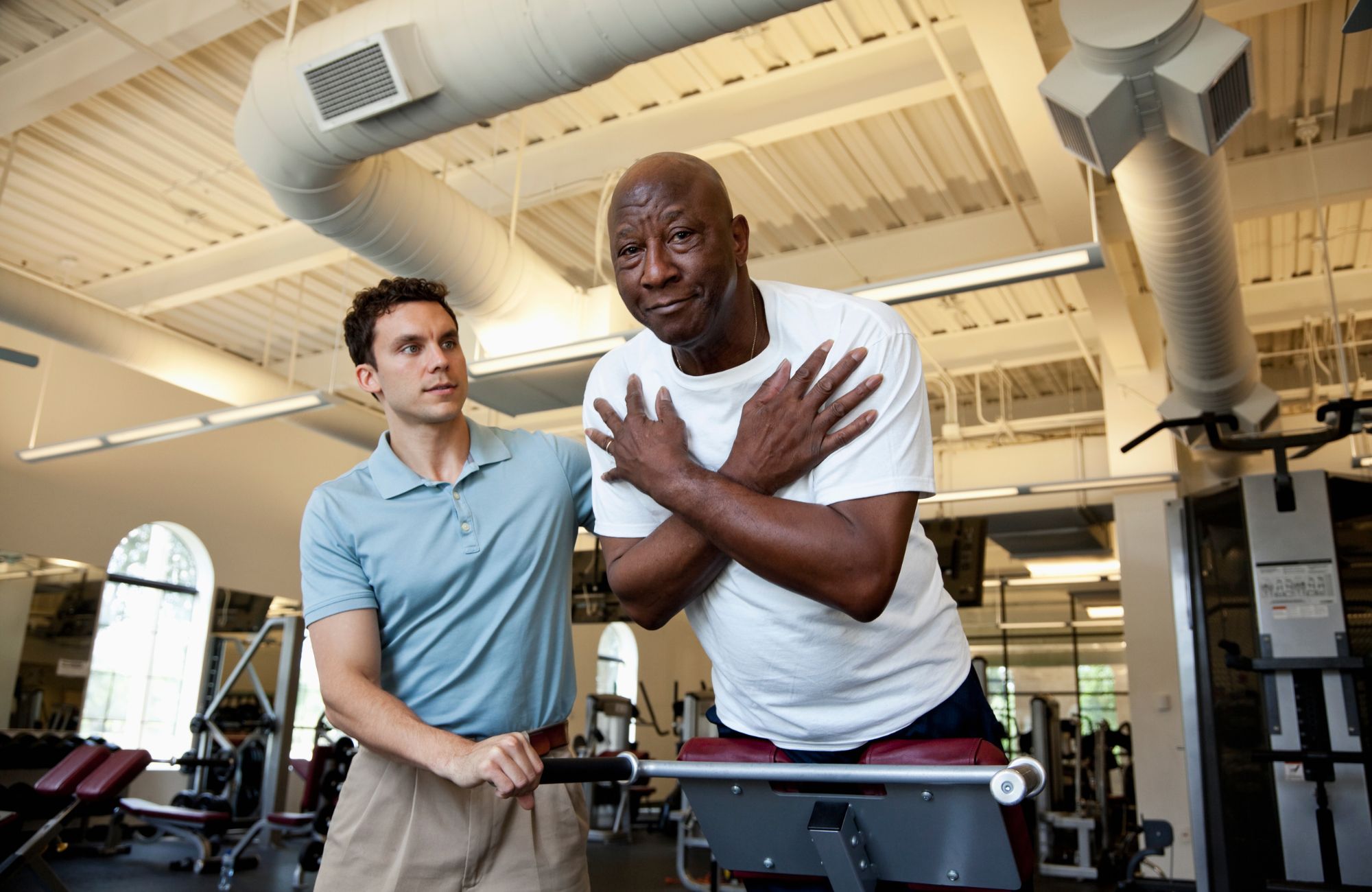If you’re looking for a career that combines your passion for healthcare with the opportunity to make a real difference in people’s lives, becoming a physical rehabilitation therapist might be the perfect path for you. Physical therapists are essential in helping individuals recover from injuries, manage pain, and regain their independence, allowing them to lead healthier, more active lifestyles. As the demand for skilled therapists continues to grow, so does the potential for career advancement and job stability.
In this guide, we’ll walk you through everything you need to know about how to become a physical rehabilitation therapist, from education and licensure to physical therapist programs, specialized training, and career prospects. Whether you’re just starting your journey or looking to take the next step, this guide will provide you with the roadmap you need to succeed in this fulfilling and impactful career.
What is a Physical Rehabilitation Therapist?
A physical rehabilitation therapist works with patients who have injuries, disabilities, or health conditions that affect their ability to move or function. Through hands-on therapy, exercise programs, and treatment plans, physical therapists help patients improve their movement, manage pain, and restore function. A treatment plan is a personalized, evolving strategy that is adjusted throughout the course of therapy to meet the patient’s changing needs. Physical therapists also assist patients in developing fitness routines to support long-term health and wellness. Many physical therapists specialize in specific areas like sports medicine, geriatrics, or pediatrics, allowing them to focus their expertise on specific patient groups.
Physical therapists are trained healthcare providers who play a crucial role in the rehabilitation process. They work with patients to facilitate recovery and help them live more active, pain-free lives, without the need for surgery and prescription drugs.
Why Become a Physical Rehabilitation Therapist?
Job Demand and Outlook
The demand for physical therapists is strong. According to the U.S. Bureau of Labor Statistics, employment for physical therapists is projected to grow by 14% from 2023 to 2033, which is much faster than the average for all occupations. As the population ages and most physical therapists find that more people seek non-invasive pain management options, the need for physical therapy will continue to rise.
However, the demand for physical therapists varies depending on geographic location, population needs, and healthcare trends.
Salary Expectations
As of 2025, the median annual salary for physical therapists in New York, NY is $122,601. Salaries typically range from $110,801 at the 25th percentile to $134,401 at the 75th percentile, with an hourly rate of $59. Compensation varies based on factors such as location, experience, specialization, and the size of the employer. Physical therapists in specialized fields or those in management roles generally earn higher salaries.
Impact on Patients’ Lives
A career as a physical therapist offers the opportunity to make a meaningful impact on people’s lives. Physical therapists develop a personalized recovery plan for each patient to guide their rehabilitation and maximize functional improvement. Whether it’s helping someone recover from an injury, improving mobility after surgery, managing chronic pain, or promoting fitness and wellness programs, physical therapists have the ability to make a real difference in patient outcomes.
How to Become a Physical Rehabilitation Therapist
Step 1: Earn a Bachelor’s Degree
To become a physical therapist, you need to start by earning a bachelor’s degree. While many students pursue degrees in biology, kinesiology, or exercise science, a specific undergraduate degree is not always required. Degrees in health sciences are also highly relevant for preparing for a career in physical therapy. What matters is completing the specific undergraduate courses required for your Doctor of Physical Therapy (DPT) program admission. These courses typically include anatomy, chemistry, physics, and biology.
It’s also important to gain some experience in physical therapy settings through internships or volunteer work. Many physical therapy students find that hands-on experience is crucial in gaining a deeper understanding of patient care.
Step 2: Enroll in a Doctor of Physical Therapy (DPT) Program
Once you’ve earned your bachelor’s degree, the next step is enrolling in a physical therapy program at the doctoral level, such as a Doctor of Physical Therapy program. DPT programs typically take three years to complete, combining classroom instruction with clinical education. In these physical therapy programs, you’ll study subjects such as musculoskeletal systems, patient care, biomechanics, and therapeutic exercises. Most DPT programs also include a final clinical experience, which provides you with hands-on practice in real-world settings.
Choosing the right DPT program is important. Ensure that the program is accredited by the Commission on Accreditation in Physical Therapy Education (CAPTE), which is required for licensure. Completing an accredited physical therapy degree is necessary to become a licensed physical therapist. Keep in mind that some programs may offer accelerated or dual-degree options, depending on your background and goals. Additionally, a few programs provide unique pathways such as freshman entry or guaranteed admission for select students.
When evaluating DPT programs, be sure to research financial aid opportunities, including scholarships and funding options, to help manage tuition and other educational costs.
Step 3: Pass the National Physical Therapy Examination (NPTE)
After completing your DPT program, you will need to pass the national physical therapy exam (NPTE), which is required for licensure in all states. The NPTE is a comprehensive exam that tests your knowledge and ability to apply physical therapy principles. You will need to achieve a passing score to practice as a licensed physical therapist.
Step 4: Obtain State Licensure
In addition to passing the NPTE, all physical therapists must obtain state licensure. While the requirements for licensure vary by state, most states require a criminal background check and may have additional exams, such as a law exam. Some states also require passing a state licensure exam as part of the licensing process. Be sure to contact your state’s licensing board to understand the specific requirements in your area.
Step 5: Optional Residency or Fellowship
After obtaining your license, you may choose to pursue additional education and training through a residency program or clinical fellowship. A residency program provides advanced, specialized clinical experience and can lead to certification in specific areas of physical therapy, such as orthopedics, sports rehabilitation, or neurology. After completing a residency, a clinical fellowship offers further subspecialty training and advanced clinical experience in a focused area. Completing a residency or fellowship is not required to practice as a physical therapist, but it can enhance your skills and improve your job prospects.
Where Do Physical Rehabilitation Therapists Work?
Physical therapists typically work in a variety of settings, including:
- Outpatient Clinics: Physical therapists typically work in outpatient clinics, where they treat patients recovering from surgeries or injuries.
- Sports and Fitness Facilities: Physical therapists in these settings help athletes recover from injuries and improve their performance through targeted rehabilitation and fitness programs.
- Home Health Agencies: Some physical therapists visit patients in their homes to provide therapy, particularly for individuals recovering from surgery or dealing with long-term conditions.
- Private Practices: Physical therapists may also work in private practices, providing personalized care to patients in a one-on-one setting.
- Nursing Homes: Physical therapists working in nursing homes help elderly patients regain mobility and independence, often working with those who have chronic conditions like arthritis or stroke recovery.
- Hospitals: Some physical therapists work in hospitals, assisting patients with rehabilitation after surgeries, accidents, or illnesses.
Clinical practice settings allow therapists to apply their skills and knowledge to real-world patient care.
Skills Required for Success in Physical Rehabilitation Therapy
To be successful as a physical rehabilitation therapist, you will need a variety of skills:
- Physical Stamina: Physical therapists spend long hours on their feet, working with patients. Physical stamina is essential for managing the demands of the job.
- Attention to Detail: Therapists must be able to carefully assess patients’ conditions and design tailored treatment plans.
- Emotional Intelligence: Understanding patients’ concerns and building trust is essential in developing effective treatment plans.
- Time Management: With multiple patients to care for, time management skills are critical to efficiently complete administrative tasks such as documenting patient progress and handling other non-clinical responsibilities.
- Patient Education: Being able to educate patients on how to improve their health and manage pain is a key part of the job.
Career Outlook for Physical Rehabilitation Therapists
Job Growth
The job outlook for physical therapists is strong. According to the U.S. Bureau of Labor Statistics, employment is expected to grow 14% from 2023 to 2033, faster than the average for other occupations. This growth is largely driven by the aging population and the increasing need for physical therapy services.
Salary Expectations
The median annual wage for physical therapists was $101,020 in 2024. However, salaries can vary based on location, specialization, and experience. For example, physical therapists in specialized fields or management positions typically earn higher salaries.
How to Jumpstart Your Physical Therapy Career
Once you’ve completed the necessary education and licensure requirements, it’s time to start your career. Here are a few tips to get started:
- Build a Strong Resume: Highlight your clinical experience, any specialized training, and any volunteer work in physical therapy settings.
- Network: Attend conferences and events hosted by organizations like the American Physical Therapy Association (APTA) to meet potential employers and colleagues.
- Collaborate with Other Healthcare Providers: Build relationships and collaborate with other healthcare providers to enhance patient care, gain referrals, and broaden your professional perspective.
- Consider Specialization: Pursuing additional certifications or a residency in a specialized field can set you apart from other candidates and increase your earning potential. Physical therapists choose specific treatment techniques and customize care plans based on patient needs, so specialization can help you develop expertise in these areas.
- Stay Updated: The field of physical therapy is always evolving, so continue learning through workshops, continuing education, and networking.
Conclusion
Becoming a physical rehabilitation therapist is not just a career; it’s an opportunity to change lives. With the right education, training, and dedication, you can help individuals regain their independence, reduce pain, and improve their overall quality of life. This rewarding field offers not only professional growth but also the satisfaction of knowing your work directly impacts your patients’ ability to live healthier, more active lives. If you’re ready to take the first step in your journey toward becoming a physical rehabilitation therapist, Flagstar Rehab is here to guide you, offering you access to the best career opportunities in the field. Let’s start this life-changing path together.
Ready to take the next step in your physical rehabilitation therapy career? Flagstar Rehab connects talented professionals with top-tier opportunities across the country. Explore our current job listings and start your journey today. Let us help you find the perfect role that matches your skills and passion for making a difference. Get in touch with us now and take the first step towards a fulfilling career!
FAQs
What does a physical rehabilitation therapist do?
Physical rehabilitation therapists work with patients to improve movement, ease pain, and restore function through therapeutic exercises, hands-on therapy, and teaching proper body mechanics. They treat a wide range of conditions and help patients manage pain and recover from injuries.
How long does it take to become a physical therapist?
Becoming a physical therapist typically takes around 7 years: 4 years for a bachelor’s degree and 3 years for a Doctor of Physical Therapy (DPT) program.
What is the National Physical Therapy Examination?
The NPTE is a licensing exam that all physical therapists must pass in order to practice. It tests your knowledge and ability to apply physical therapy principles in clinical settings.
Where can physical therapists work?
Physical therapists can work in a variety of settings, including outpatient clinics, hospitals, nursing homes, home health agencies, private practices, and sports and fitness facilities.
What skills do physical therapists need?
Physical therapists need strong physical stamina, attention to detail, emotional intelligence, time management skills, and the ability to educate patients effectively about their expected outcomes









